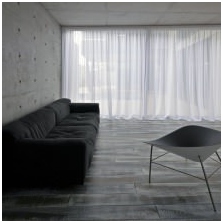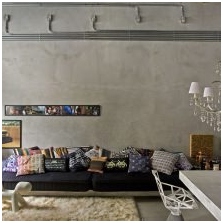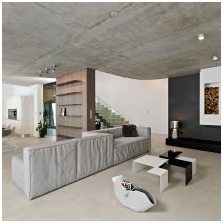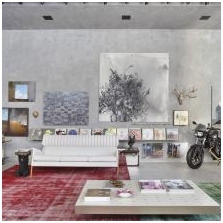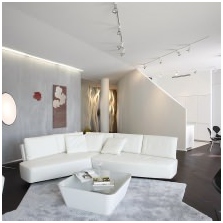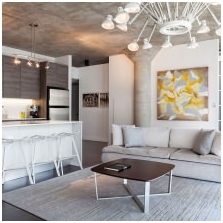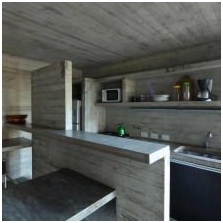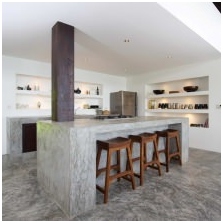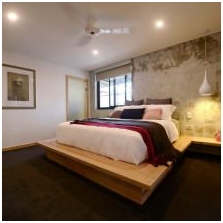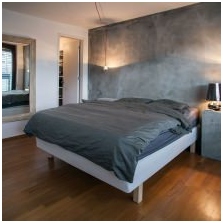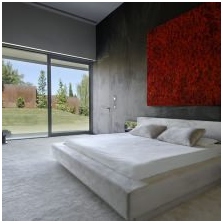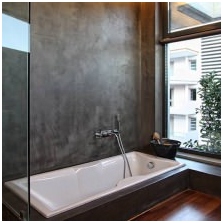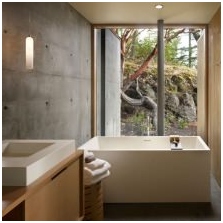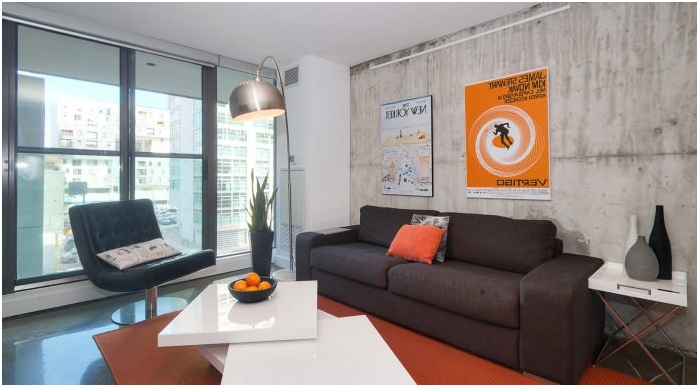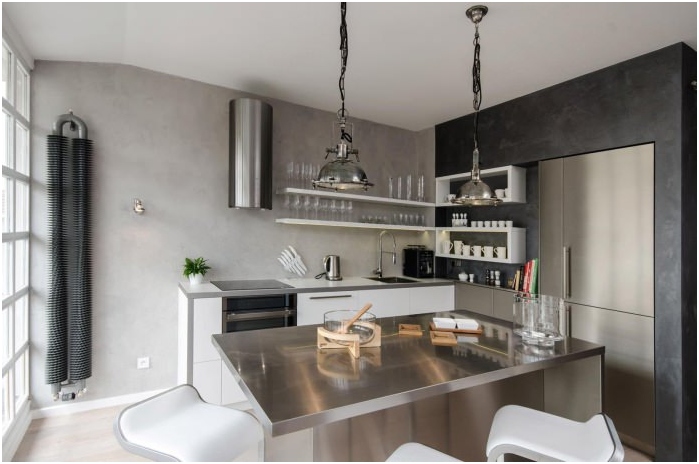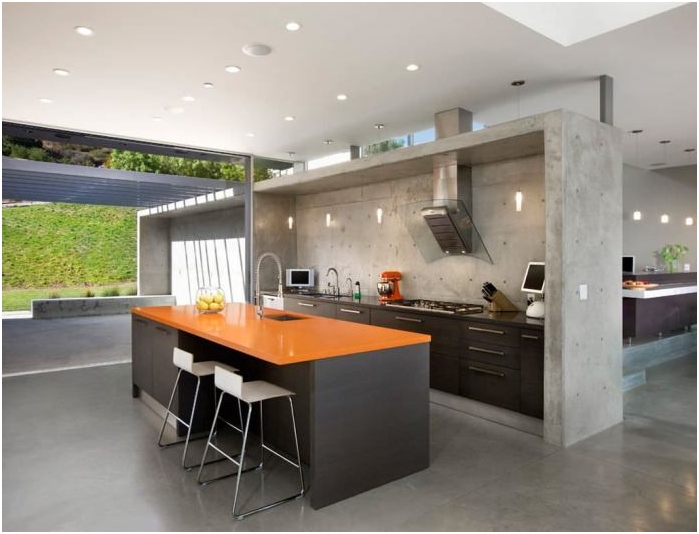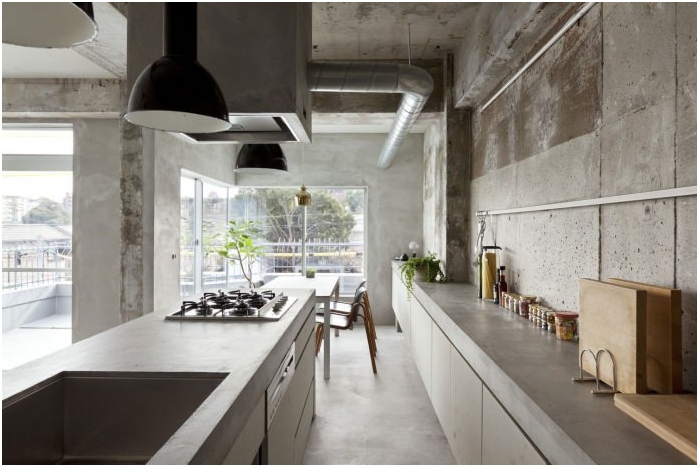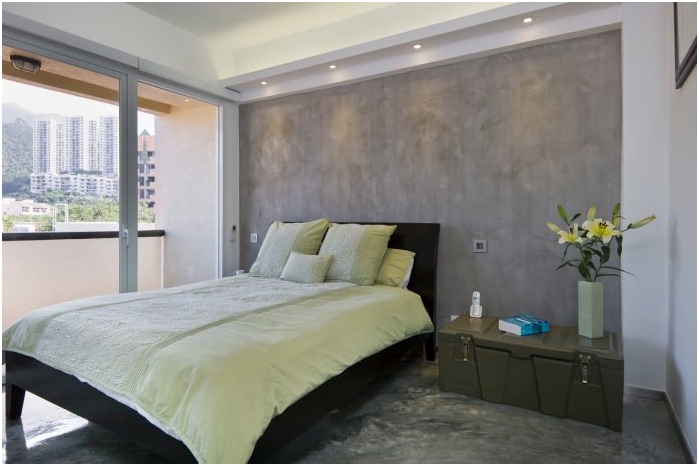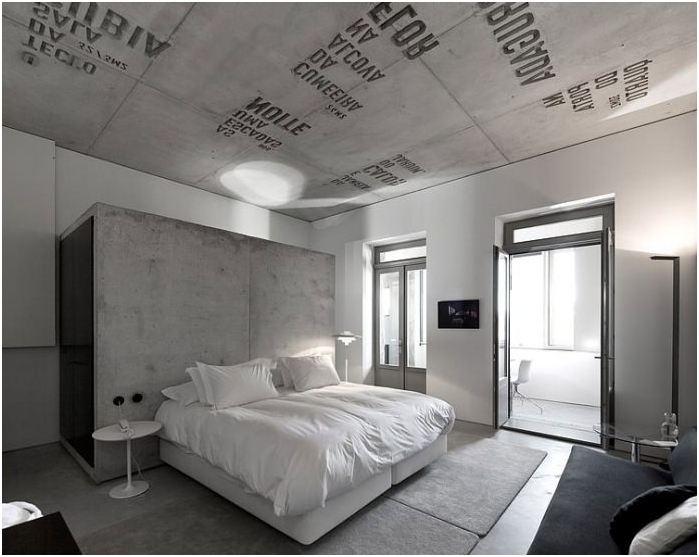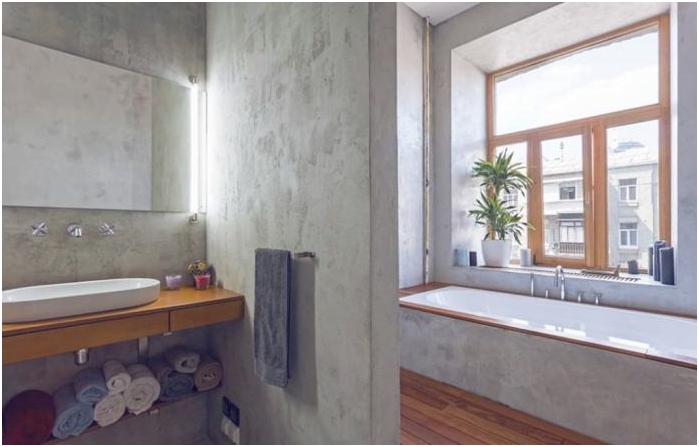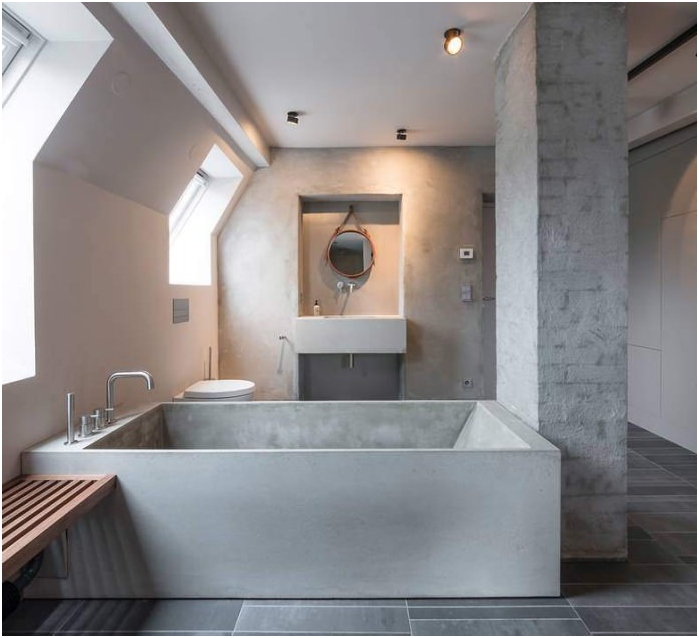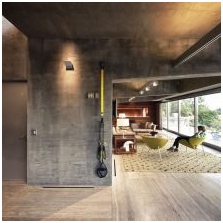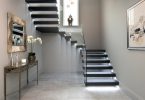Concrete walls in the interior as a decorative element began to be used relatively recently: after the industrial loft style came into fashion. They can now be the perfect backdrop for a trendy living room, cozy bedroom or functional bathroom. The color and texture of concrete are perfectly combined with other finishing materials, and have a number of undeniable advantages.
Living room
The concrete interior of the living room can be decorated in almost any style, but it fits most harmoniously into the loft and minimalism. Against the background of plain concrete surfaces, you can create an expressive eclectic interior, or a classic composition.
If the house does not have concrete walls, they can be imitated, and they do it differently for different sizes of rooms. If the living room is large, as a rule, either ready-made panels mounted directly on site are used for imitation, or textured concrete is applied as a finishing material.
With the modest size of the living room, to create concrete walls in the interior, it is better to use decorative plaster, for example, such a kind of it as microcement, which allows you to give the finished coating a variety of shades.
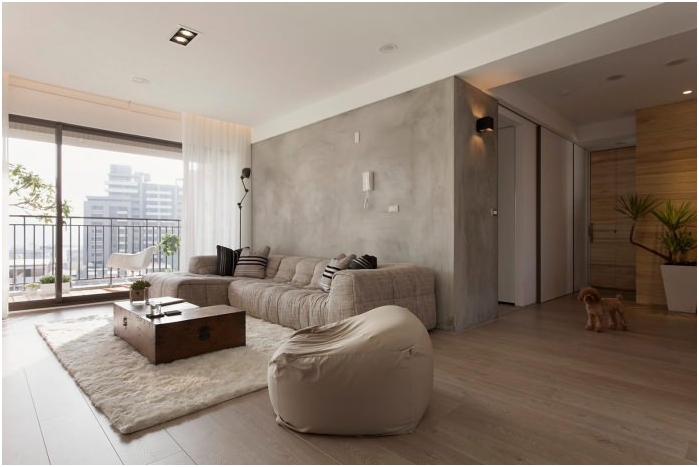
Kitchen
Concrete walls in the kitchen interior allow you to choose any finishes and furniture colors. A noble dark gray shade will expressively set off both the white gloss and bright red facades.
The only thing to consider is the texture of the material. Since concrete has many small pores, in areas where the greatest contamination is possible, for example, near the work surface or above the sink, it is better to cover the wall with a glass apron. Adding other concrete elements to the kitchen interior, for example, countertops or islands, will make it more harmonious..
Bedroom
Oddly enough, but even in this room, which, as a rule, is the most comfortable and “soft” in the house, you can use the decorative possibilities of concrete. In this case, the interior should be supplemented with textile elements of expressive texture – wool, flannel, as well as fur – for example, in the form of an animal skin, casually thrown on a chair or on the floor..
The concrete interior is softened by using wooden elements – for example, wall panels either made of wood or imitating wooden surfaces, parquet boards, wooden furniture. Details of classic decor add coziness – plinths, moldings, stucco elements.
Bathroom
A concrete bathroom interior has one significant advantage – it tolerates high humidity well. Its rough, rough surface contrasts with the smooth gloss of the sanitary ware, which adds a pleasant contrast to the environment..
Terry towels add an additional soft accent to the play of textures. The honor of the walls, ceiling and floor can be made light – to get away from the predominance of dark gray in the bathroom and to avoid a feeling of gloom.
